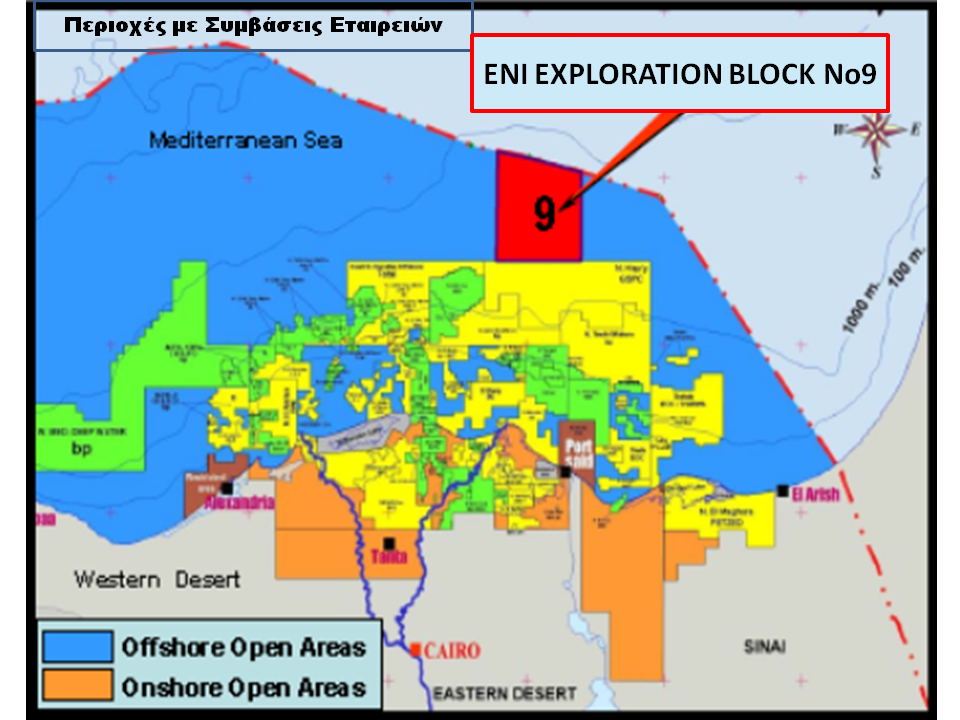21112 - The new discovery of natural gas reserve southwest of Cyprus, and its importance for Greece
E. Konofagos, N. Lygeros, A. Foskolos, N. Lygeros
Translated from the Greek by Athena Kehagias
For five years on, we’ve been systematically trying to convince our politicians, across the whole political spectrum, so that they also know what is actually happening, that the priorities and the “timing” regarding the emergence of the underwater mineral wealth of the Greek EEZ, is of great importance for our homeland.
We had always stressed, that although the Southern Crete is a completely unexplored region, it should constitute a research priority for our country, because of its proximity to the EEZ of Cyprus and Egypt, but also with the relationships that we have developed and are implemented through the tripartites.
We know that exactly the opposite occurred, and priority was given – through the executed seismic surveys – to the northern Ionian Sea, with the excuse that, the seismic recordings could be more attractive to the international markets, even though the reserves south of Crete have multiple value.
It is our duty however to continue the research effort for the location of reserves in the Greek EEZ south of Crete, which could offer significant development synergies, ie, (pipelines or liquefaction plants) with the resources of the EEZ,s of Cyprus and / or Egypt
This effort presupposes procedures of new licensing round strategy, involving greater magnitute marine plots in the South of Crete, aiming to provide their enhancement as soon as possible, with new, denser seismic underwater recordings, which will result in drillings, based on beneficial for public sector contracts.
With the presence of recently identified, remarkable natural gas target-reserves in the south of Crete, such as Minos, in geological Messinian formations, which are relative formations to those, where a few days ago the hyper giant (Supergiant Gas Field) underwater reserve of natural gas Zohr was discovered by the Italian colossus EMI.
The stocks of the reserve are estimated that they could even reach the 40 Trillion cubic feet, or around 1.14 Trillion cubic meters (Tris m3) which is corresponding, according to the current energean consumption of Greece to 250 energean years.
Comparing the characteristics of the findings, (target structures and discovered deposits) of the wider region, we should observe that the reserve Aphrodite of Cyprus, with an area of 100 km2, with a useful thickness of 90 meters (m), with a reservoir of the Messinian geological period, it was certified that it contains recoverable stocks in the order of ~ 120 Bil m3, whereas, the deposit Zohr, with an area of 120 km2, and a Messinian reservoir useful thickness of 630 m, it was identified that it could contain stocks in the order of ~ 1 Tris m3.
We must note here, that according to our calculations, a possible natural gas discovery in the target reserve “Minos” in the marine plot 14 South of Crete, with an area of 200 km2, and preservative thickness of the Messinian era reservoir at 50m, we could expect on average, recoverable stocks ~ 77 Billion m3.
We should note here, that the natural gas discovery by ENI, is at 1.450m, water depth, and drilling depth 4.131m, whereas, the target reserve Minos, is at 1,500 meters water depth, and expected drilling depth of approximately 3,000 meters.
In order for someone to see just how dramatically Greece has delayed the underwater surveys South of Crete, they have only to take a look at the map of Egyptian maritime plots (blocks) where at least 200 research and hydrocarbon reserve exploitation contracts have been signed in the last 20 years.
We will conclude by saying that, the Greek Government must understand, that time, in regards to research and production of hydrocarbon reserves of the Greek EEZ , is something extremely valuable to the economy of our country, but quite simply these actions require high strategy at national level, which is above political party inclinations and petty micropolitics.


